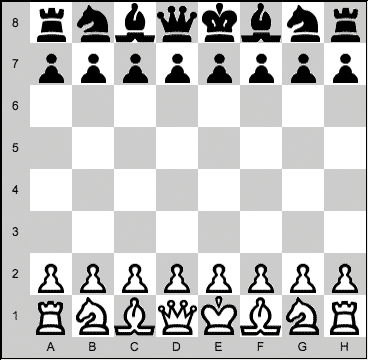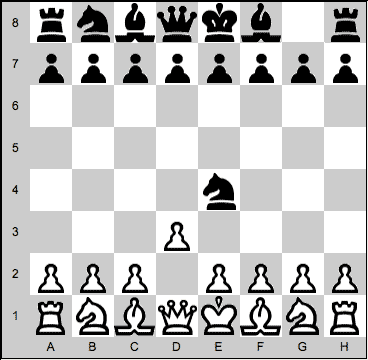Chat!
How To Play Chess — pawn moves
- Overview
- How to set up the board
- Moves
- How the pawn moves
- How the knight (also called the horse) moves
- How the bishop moves
- How the rook (also called the castle) moves
- How the queen moves
- How the king moves
- The object of the game
- Stalemate
- Draw
- Special Moves
- Pawn Promotion
- Piece Value
- Player Ratings
Moving
Each player starts off with eight pawns. Let's start with the basics. Pawns can not move backwards; only forwards. Starting from it's initial position, it can move forward one square at a time. On it's first move and it's first move only, a pawn may move two squares if it wishes. However, if it does not move two squares on it's first move, it can not move two squares later on. If there is a piece in front of it (black or white), it can not move forward. So pawns can only move forward if there is nothing in front of it.

Capturing
The pawn is the only piece that moves differently when it captures. If an opponent's piece is diagonally one square to the left or right of the pawn, it may capture that piece. Pawns only move forward, so if an opponent's piece is diagonally behind a pawn, it may not capture that piece. Again, your opponent's piece can only be one square diagonally to the left or right. Pawns can also capture in a special way called En Passant.

Solve This Puzzle?
| 8 |  |  |  |  |  |  |  |  |
| 7 |  |  |  |  |  |  |  |  |
| 6 |  |  |  |  |  |  |  |  |
| 5 |  |  |  |  |  |  |  |  |
| 4 |  |  |  |  |  |  |  |  |
| 3 |  |  |  |  |  |  |  |  |
| 2 |  |  |  |  |  |  |  |  |
| 1 |  |  |  |  |  |  |  |  |
| A | B | C | D | E | F | G | H |
